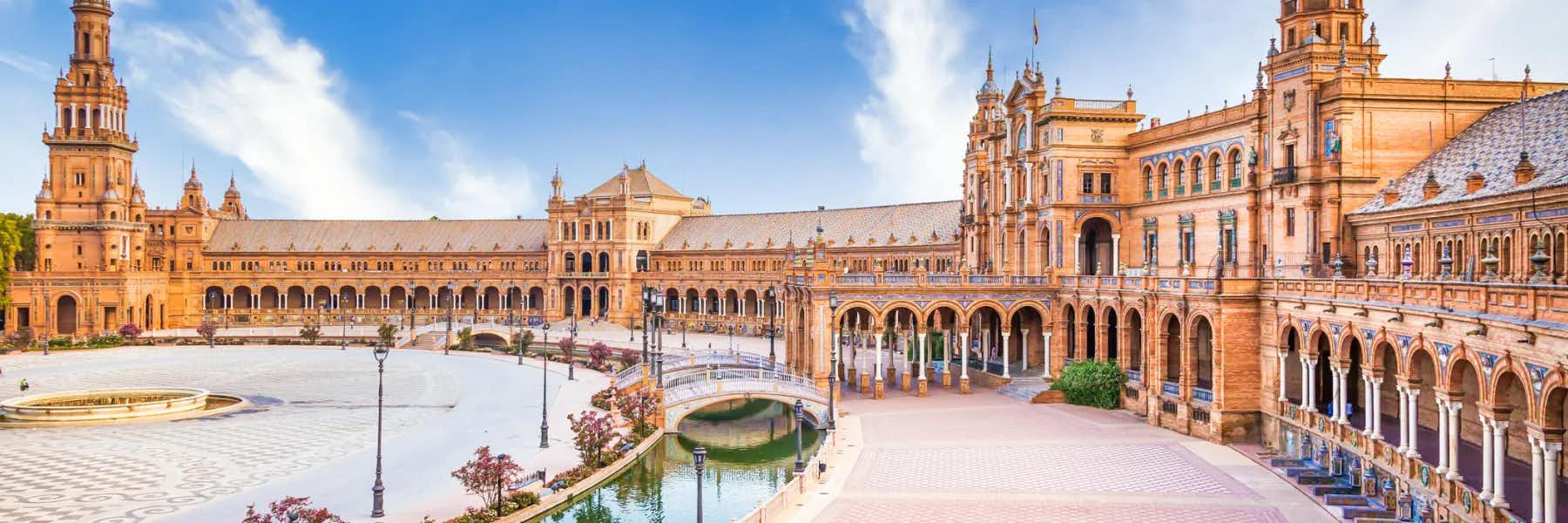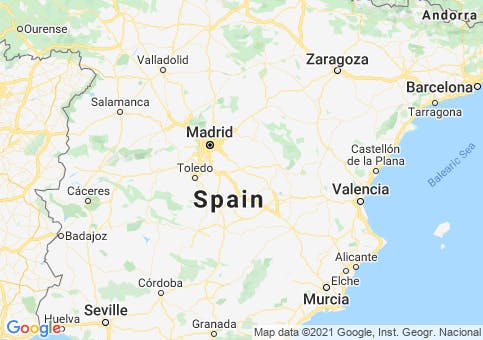For many, Seville (in Spanish, Sevilla) is the romantic, passionate heart of Andalucía, the large Autonomous Community that covers much of southern Spain. A city of nearly infinite charm, Seville (population about 700,000 in the city and 1.5 million in the greater metro area) is a mecca for those who love gracious living, southern Spanish style.
Located on the Guadalquivir River, the largest navigable river in Spain, Seville is about 50 miles from the Atlantic Ocean. (It’s the only major commercial river port in Spain, and it has been since antiquity.) Seville is the capital of the Autonomous Community of Andalucía and a major economic center for the region; it’s important in technology, aerospace, renewable energy, and research and development related to these industries.
The city is justly famous for its Moorish architecture, bull fighting, flamenco dancing, and lively culinary scene. (It bills itself as the world capital for tapas, those scrumptious little snacks that accompany your drink in Spanish bars.) Seville’s Holy Week (Semana Santa) processions are widely considered the most solemn and impressive in Spain, drawing millions of visitors each year. And its feria (fair) in April, with its wealth of street activities, is also a highlight of the year. (Though it’s commonly thought that the best parties during the feria are private events, in the tented enclosures rented every year to Seville’s top families.)
Tourism is a major industry. Along with Córdoba and Granada, Seville forms part of the “Moorish Triangle”: the three cities that best showcase Spain’s long Moorish history. (The Moors were in Spain from 718 to 1492, and ruled Seville itself until 1248.)
Certainly, Seville’s ambience evokes this past. When you stroll through the Patio de los Naranjos—the Patio of the Orange Trees—next to Seville’s massive Gothic cathedral…or climb the Giralda Tower—whose ramped floor to the top could accommodate riders on horseback—you can feel as though you’ve stepped back into Spain’s Moorish past. But, in fact, few of Seville’s buildings are genuinely Moorish…. Rather, the locals liked the architectural style so much that they continued to imitate it for centuries after the Moors left.
And, indeed, the style fits the city and its climate. Winters are relatively mild, with average highs in the 60s F and lows in the 40s F. But summer temperatures, especially in July and August, can soar well over 100 F, with next to no humidity. How better, then, to spend the hot days than in a house with thick stone walls to keep out the heat and a placid central patio, perhaps with a tinkling fountain in the center, and masses of flowers around it? This lifestyle has appealed to Sevillanos for centuries…and in this city, tradition runs strong.
Get Your Free Spain Report Today!
Get Your Free Spain Report Today!
Learn more about the lower cost of living in Spain and other countries in our free daily postcard e-letter. Simply enter your email address below and we'll also send you a FREE REPORT — Live the Good Life in Sunny, Affordable Spain.

By submitting your email address, you will receive a free subscription to IL Postcards and special offers from International Living and our affiliates. You can unsubscribe at any time, and we encourage you to read more about our Privacy Policy.
Retire in Seville
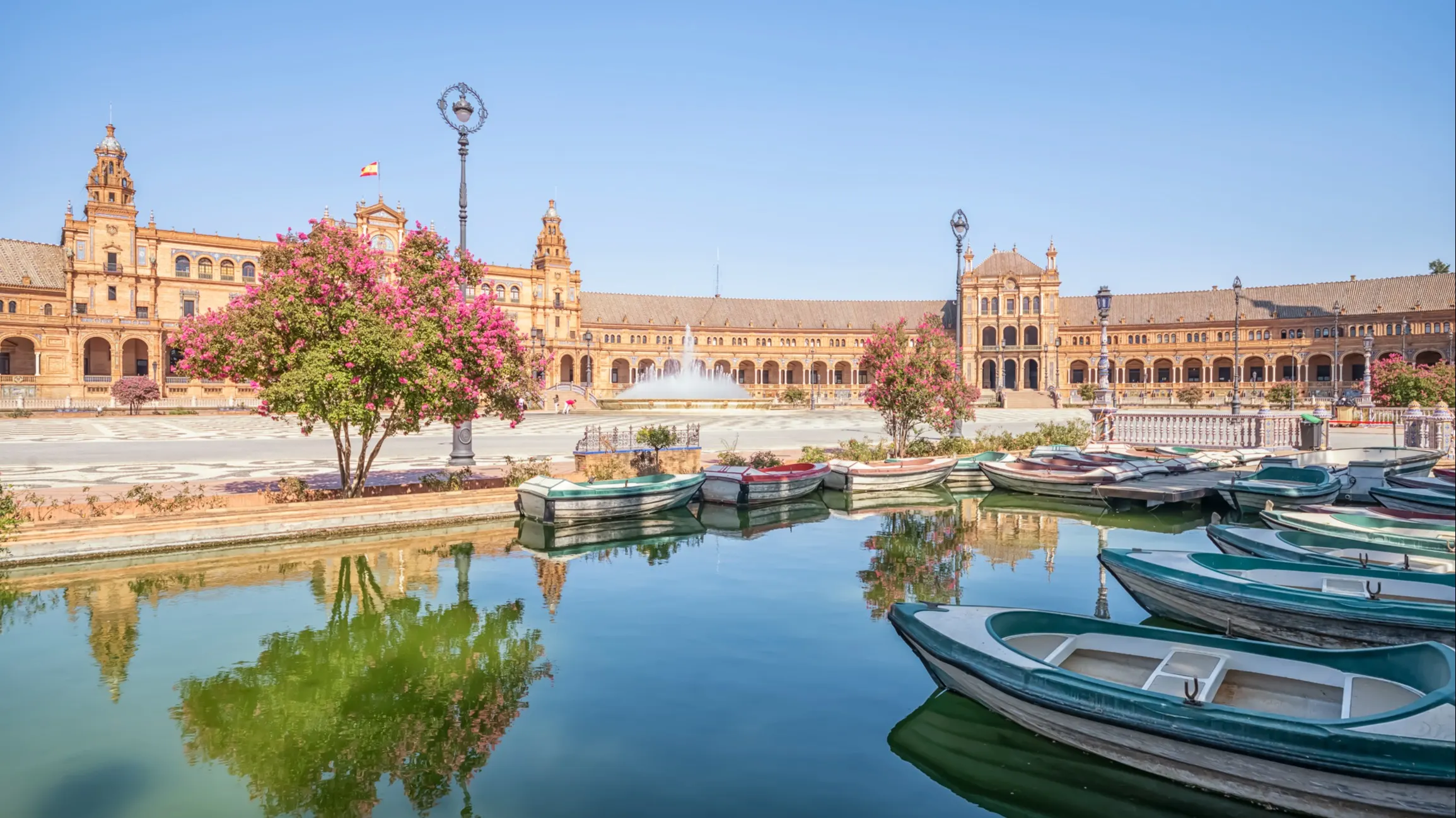
Once you’ve visited Seville, you may find yourself wanting to return permanently. And that’s definitely possible to do. This is a city that rewards exploration by those who have the time to do so leisurely, wandering its streets, sitting in its cafes, and imbibing its atmosphere.
Though you may want a car to wander the Andalusian countryside, it’s easy to explore central Seville on foot and on public transport—no car needed. Seville has city transport by bus, tram, and metro. A commuter rail service (cercanías) connects the central city with the greater metropolitan area.
And getting to Seville from elsewhere is easy. Long-distance trains leaving from the main Santa Justa train station connect the city with the rest of Spain. (Seville is as little as two-and-a-half hours from Madrid on Spain’s high-speed AVE trains.) You can also fly into Seville’s San Pablo airport, the second-busiest in Andalucía. It’s used by discount airlines that include RyanAir, Vuehling, and easyJet, as well as by major carriers British Airways (flights to/from London Gatwick), Lufthansa (Frankfurt and Munich), and TAP Air (Lisbon). As a result, getting around Europe from Seville is a snap.
For healthcare, Seville has a number of excellent hospitals, both public and private. The two main public hospitals, the Virgen del Rocío and the Virgen Macarena, are both university-affiliated. And the private Hospital Quirónsalud Sagrado Corazón in Seville often is listed among the best hospitals in the country.
To retire in Spain, you’ll need to get a long-term residence visa. You’ll need to apply for it from your home country, then go to Spain to activate it. For citizens of non-European Union countries (including the U.S. and Canada), the main requirements include showing proof that you are economically self-sufficient and that you have private health insurance valid in Spain.
Lifestyle in Seville
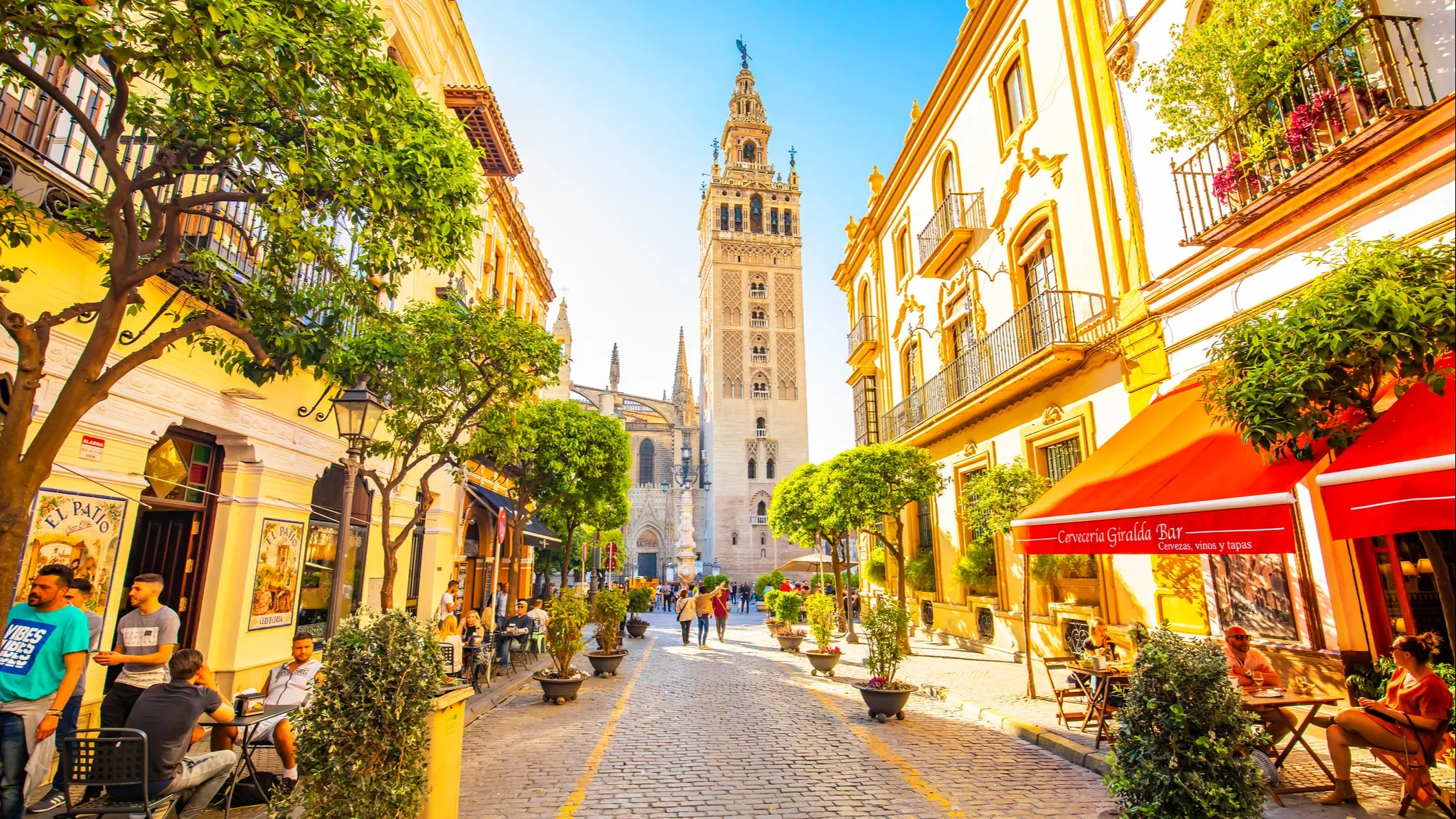
Seville has a lively restaurant and bar scene, especially in popular neighborhoods like Santa Cruz, the old Jewish quarter in the city center, and Triana, the former gypsy quarter that is across the Guadalquivir from the main city. Tapas in Seville have practically been raised to an art form, and tapas bar-hopping is practically a sport.
Because Seville gets as many as 300 days of sunshine a year, and winters are mild, expect to be outside a lot. Outdoor cafés, called terrazas, abound, as do popular festivals that take place outdoors.
Because Santa Cruz and Triana ooze character and color, they’re extremely popular with tourists. So for full-time living, better bets may be neighborhoods like El Arenal—the upscale neighborhood near Seville’s famous bullring—and the neighborhoods near the Parque María Luisa and the Plaza de España, among others.
For grocery shopping, Seville has some fabulous traditional markets, including the Mercado Triana and Mercado de la Incarnación. There are also supermarkets, including chains like Mercadona, Carrefour, and the food court of Spanish department store El Corte Inglés
Cost of Living in Seville

Accommodation costs naturally vary depending on where you choose to live in Seville. But expect to pay in the €200,000 (about $242,000) range or more for a two- to three-bedroom apartment in the central areas of Seville. You can find rentals of decent one-bedrooms starting in the €650 to €700-a-month range. (This is roughly from $754 to $812.)
Keep in mind that electricity costs in Spain are relatively expensive and that summers in Seville are extremely hot. So you’ll want air conditioning…or leave Seville for cooler weather in the hot summer months. But winter temperatures are mild enough that you’ll need fairly minimal heating.
Here’s an example of a typical monthly budget for a couple in Seville:
| EXPENSE | U.S. $ |
|---|---|
| Rent | $850 |
| Utilities (heating, gas, electricity) | $140 |
| Cellphones (x2) | $98 |
| Groceries and household items | $370 |
| Entertainment (dining out and other activities) | $450 |
| Health insurance (x2) | $276 |
| Internet | $50 |
| Transportation (taxis, buses) | $85 |
| TOTAL | $2,319 |
Top 10 Things To Do in Seville, Spain
By Karen McCann
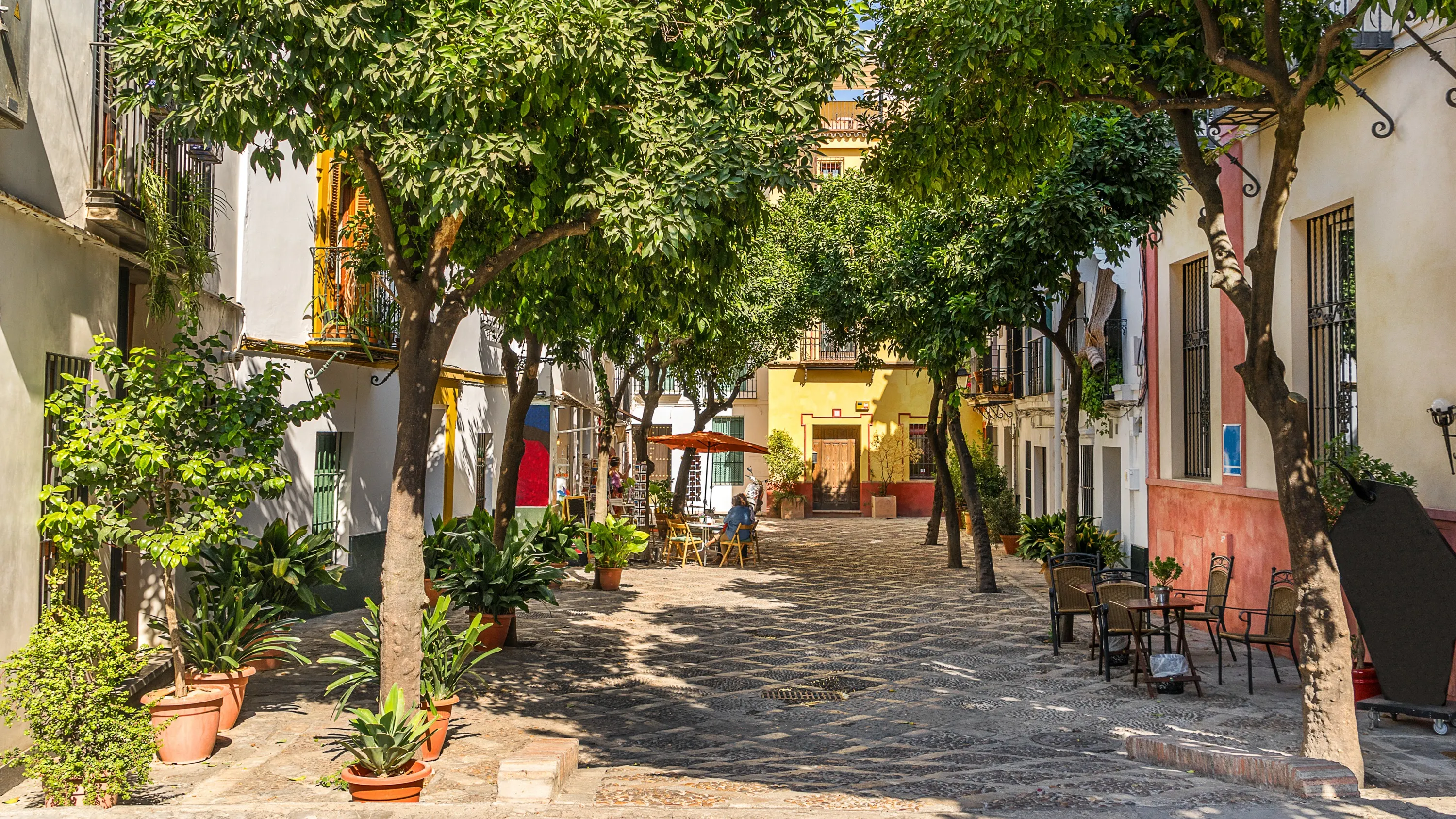
Exploring Seville is best done with a typically Spanish attitude—which means taking it slow, stopping often for refreshments, and savoring each delicious moment of the day. This gorgeous, ancient city is easiest to navigate on foot, as it’s flat, compact, and has two highly visible landmarks: the cathedral tower and the river. Walking will give you ample time to discover small, unexpected pleasures, such as an old Moorish arch, a flamenco dancer in the park, or an irresistible sidewalk café.
Morning Coffee at Hotel Alfonso XIII
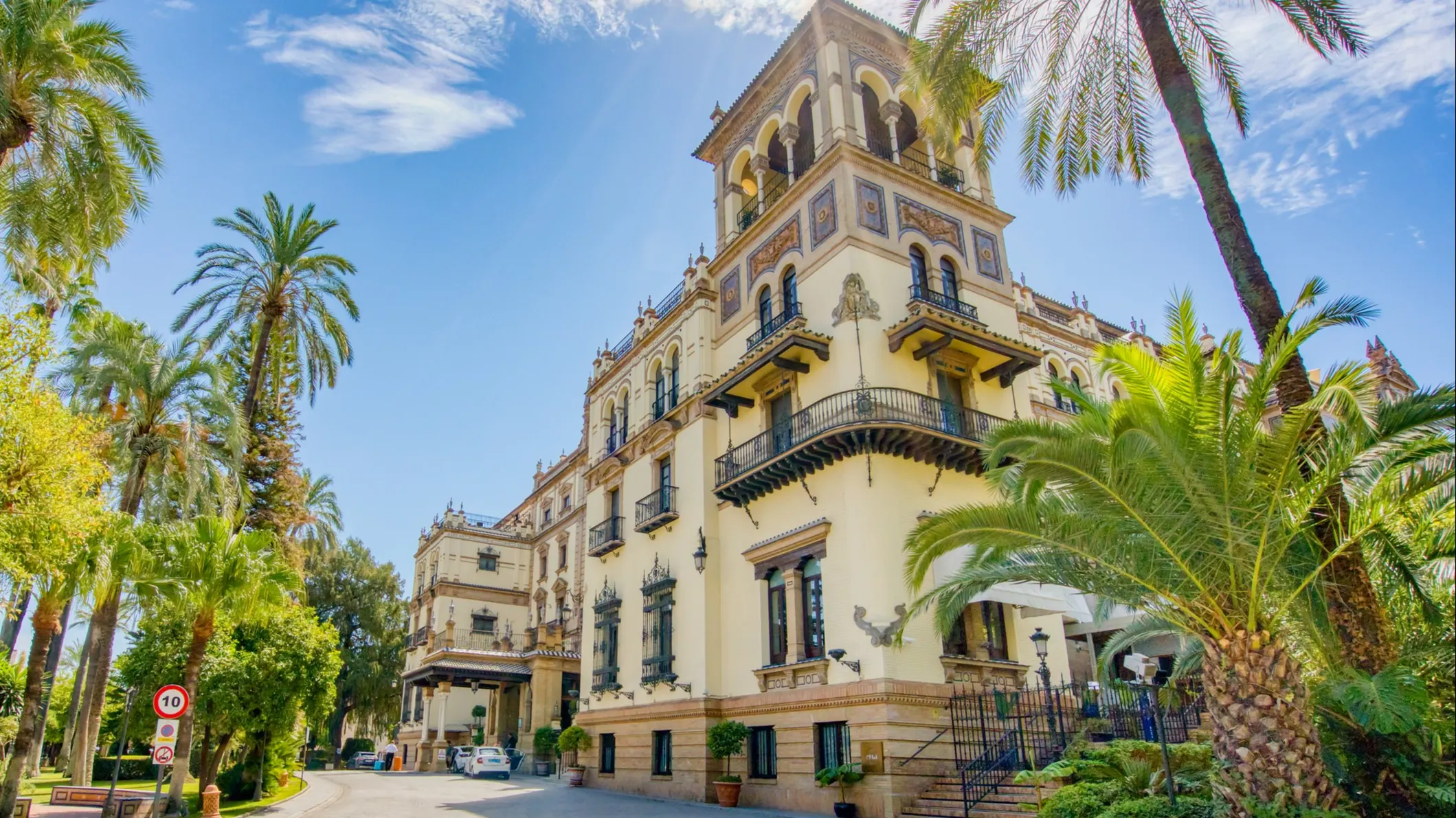
When Sevillanos go sightseeing, the expedition invariably begins with a fortifying cup of café con leche (coffee with milk), and one of the finest places for this morning ritual is Hotel Alfonso XIII. The city’s premier hotel opened in 1929, commissioned by (and named for) the man ruling Spain in those days, King Alfonso XIII. The building and grounds remain a symbol of luxury and a delight to the eye with elaborate tilework, gracious fountains, and other Moorish-Revival elements. Take your coffee in the fresh air of the courtyard or in one of the cozy nooks indoors.
The Royal Alcázar Palace
Still the residence of the Spanish royal family when they’re in town, the sumptuous 14th century Royal Alcázar Palace is a breathtaking example of late Medieval Moorish architectural style with Gothic and Renaissance elements. This UNESCO World Heritage site includes magnificent gardens; as you enter them, don’t miss the steps that lead below the palace to Los Baños de Doña María de Padilla (The Baths of Lady María de Padilla) an underground pool constructed for his mistress by the legendary Pedro the Cruel. Be sure to book tickets online in advance or sign up for a guided tour to avoid long lines at the entrance. Summer concerts in the gardens at night are a special treat.
The Seville Cathedral
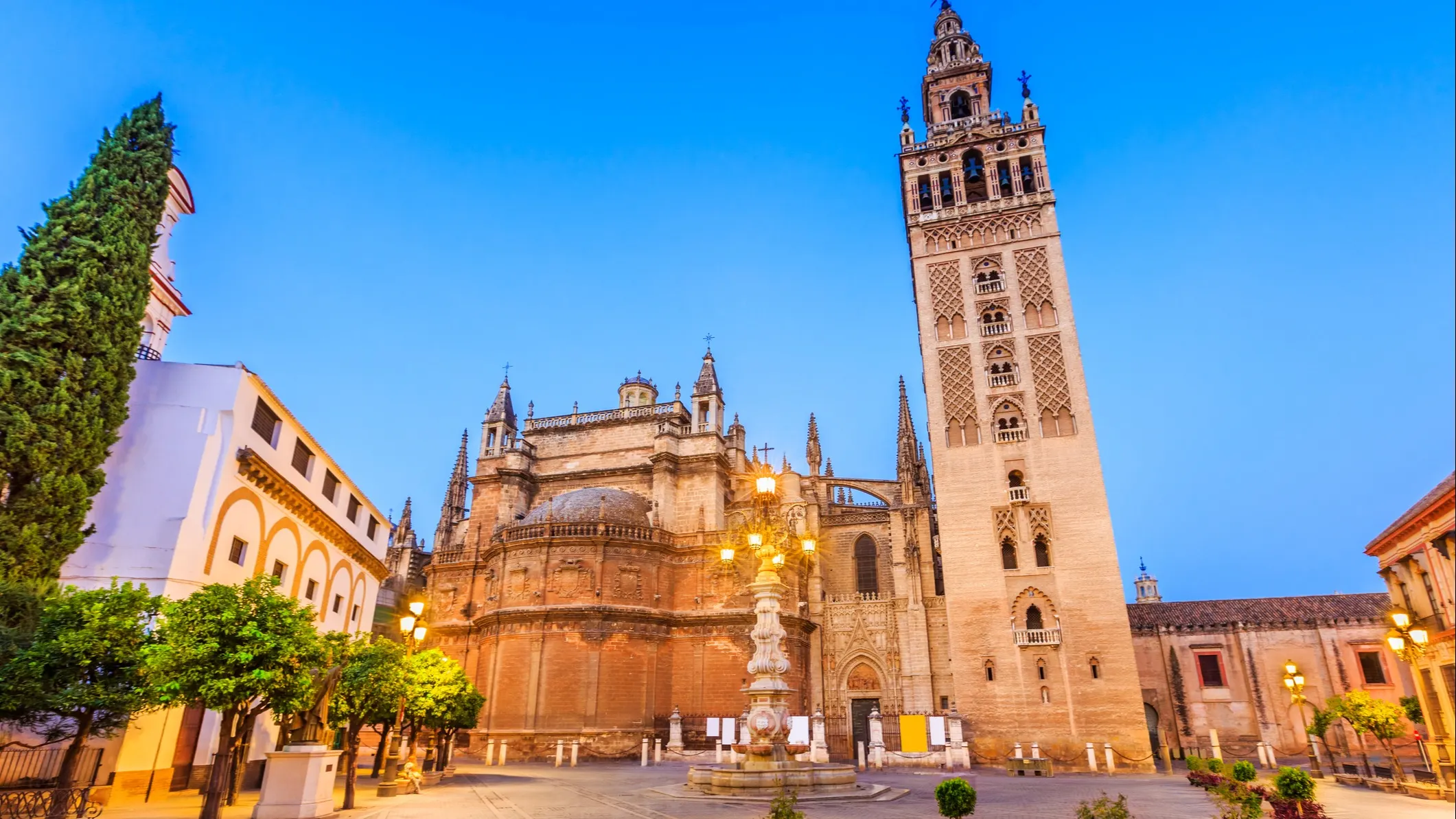
According to legend, the architects of this building declared, “We want to build something so enormous that when future generations see it, they will call us mad.” They accomplished their goal. It’s insanely big and rated the largest Gothic cathedral in the world, with 80 chapels, a treasury, the tomb of Christopher Columbus, and a 343-foot tower you ascend via a ramp. The tower and the cathedral itself are both UNESCO World Heritage sites. One of the best ways to see the cathedral is to book a Rooftop Tour, which offers fascinating behind-the-scenes glimpse of this historic building’s construction from unique viewpoints. Tickets can be ordered online in advance, and of course, you can enter for free to attend religious services.
Second Breakfast at Le XIX
The Spanish love a second breakfast (what the British call “elevenses”) in the late morning, and there a few better spots for it than Le XIX. The name is the Roman numeral 19, or diecinueve (dee-yes-ee-NWAY-veh) in Spanish. Housed in a quirky Modernist building near the Cathedral, Le XIX has a cozy, eclectic interior. Choose from a dozen kinds of artisanal breads, and have it local style: topped with olive oil and paper-thin slivers of jamon (ham).
Get Your Free Report on the World's Best Places to Retire in 2025
Get Your Free Report on the World's Best Places to Retire in 2025
Simply enter your email address below to sign up for our free daily postcard e-letter and we'll also send you a FREE report on The World's Top 10 Retirement Havens for 2025.

By submitting your email address, you will receive a free subscription to IL Postcards and special offers from International Living and our affiliates. You can unsubscribe at any time, and we encourage you to read more about our Privacy Policy.
Plaza de España

The jewel of the 100-acre Maria Louisa Park is the 1929 Plaza de España, a mix of Art Deco, Spanish Renaissance Revival, Baroque Revival, and Moorish Revival styles — a fantasy building with elaborate towers, sumptuous tiles, and a newly restored moat you can paddle around in a boat. You can also take a horse-drawn carriage ride, peddle a surrey, rent a bike, or just stroll under the ancient trees and admire the fountains.
Palacio de Las Dueñas
Spain’s richest noble and Europe’s most titled aristocrat, the Duquesa of Alba was a legendary figure around Seville until her death in 2014. Having buried three husbands, in 2011 she married a fourth in her home chapel, then came outside, kicked off her shoes, and did a little flamenco dance for the locals gathered outside the gates. She was 85. Today, her 14th century palace is a museum rich with art, cultural artifacts, and mementos of a life well lived.
Metropol Parasol
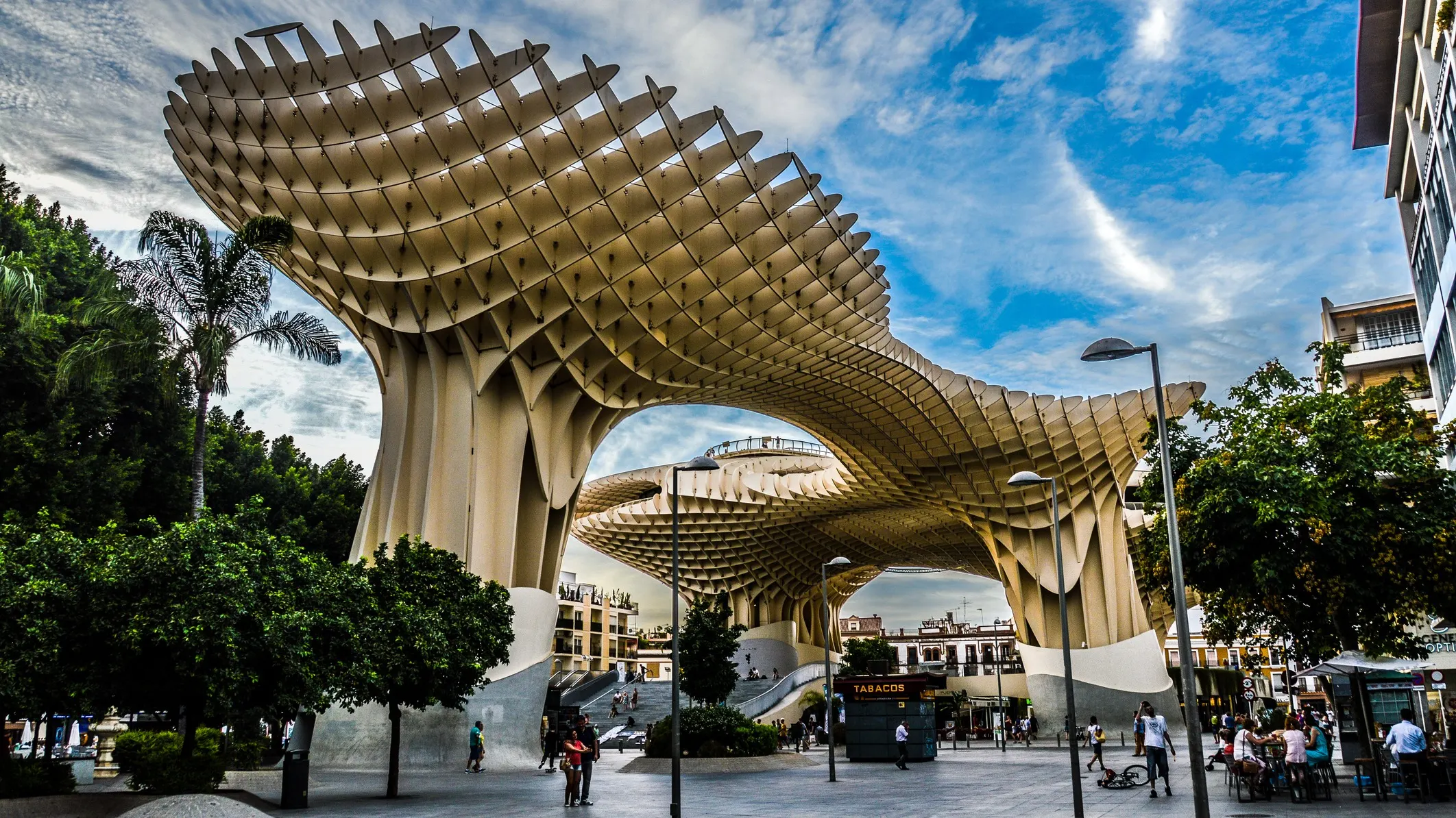
One of the most controversial buildings ever added to Seville’s landscape, the new Metropol Parasol is widely known as “Las Setas” (The Mushrooms) for their shape: five thick pillars rising 85 feet in the air to support an amorphous blob. Whether you love it or hate it, you’ll enjoy visiting the Antiquarium underneath, where Roman, Visigoth, and Moorish ruins remain on view, and riding the elevator to the upper walkways, which afford excellent views of the city (and into the apartments of residents who forget to close their shutters).
Triana Market
Just a short stroll across the Puente de Isabel II (Isabel II Bridge) you’ll find the 150-year-old Triana Market. Built above the ruins of St. George’s Castle (headquarters of the Spanish Inquisition), this traditional market has stalls selling fresh, local produce, seafood, meat, cheese, and bread. It’s the perfect place to stock up for a picnic along the river or settle into one of the market’s small cafés, where you can be sure everything you’re eating is a fresh as this morning’s catch.
Seville’s Hot New Gastropubs
With younger chefs now introducing a dazzling array of international and fusion dishes to the excellent traditional fare, the city’s food scene is booming. There are dozens of sophisticated eateries to choose from. Barra Castizo offers old-school dishes with distinctive artistic flourishes in an eclectic environment; don’t miss the rest room walls covered with domino tiles. For a quiet oasis with excellent food and a congenial host, La Mata is hard to beat. Mamaracha has generous tapas and a good wine list; try to get a seat under their iconic vertical garden. Zalata is a cozy place with international dishes arranged so artistically they’re almost too gorgeous to eat (but too delicious to resist); their arroz negro (black rice) is among the best in the city.
Bar Garlochi
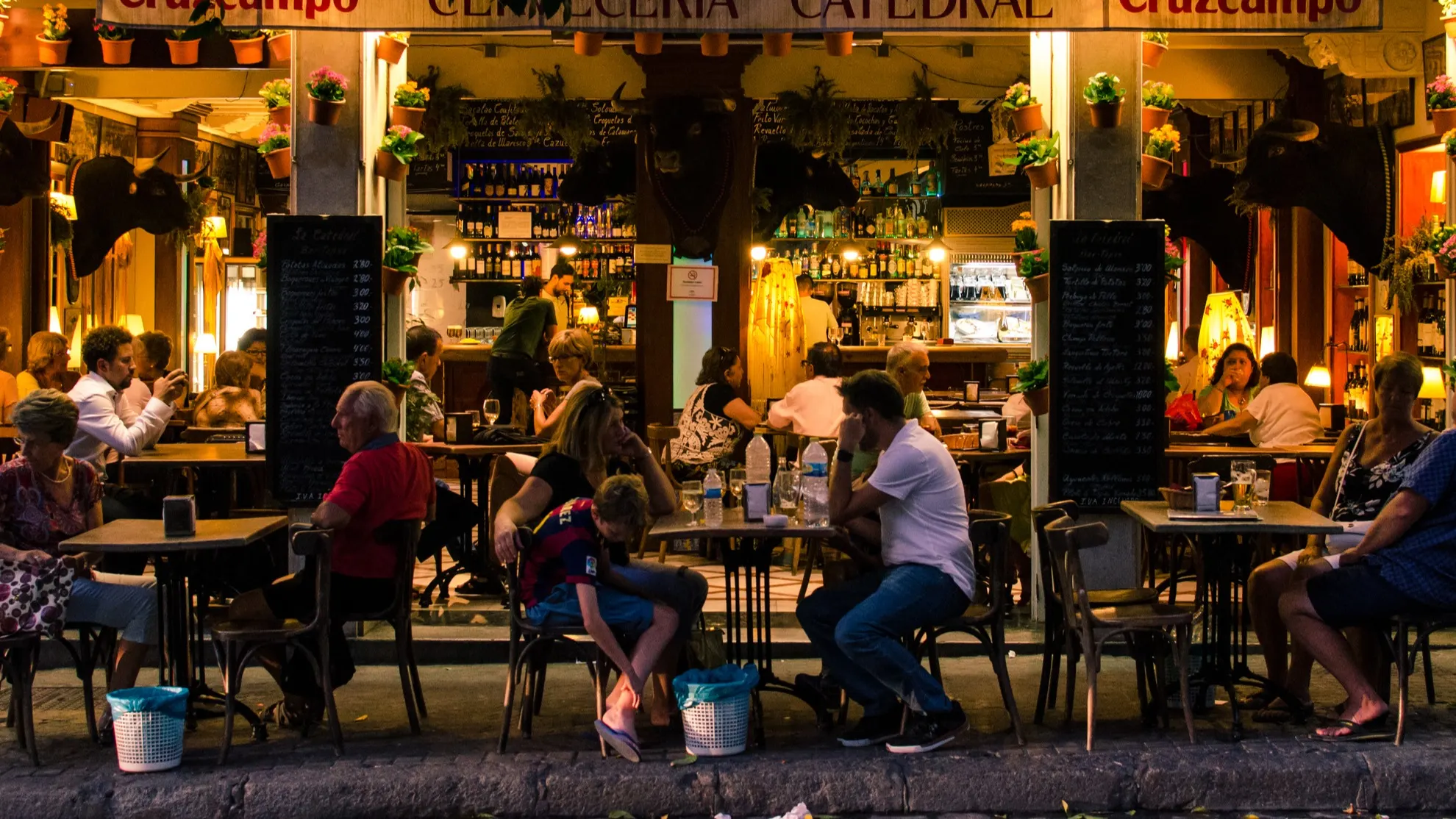
This is the city’s most iconic late-night bar. Famous for its outrageous, only-in-Seville décor, which features Semana Santa (Holy Week) art and a painting of the Duquesa de Alba, the Garlochi’s signature drink is Sangre de Cristo (Blood of Christ), a sweet, alcohol-laden concoction which delivers a diabolical hangover. You have been warned.Seville, Spain: Gorgeous, Welcoming, and Affordable
by Karen McCann
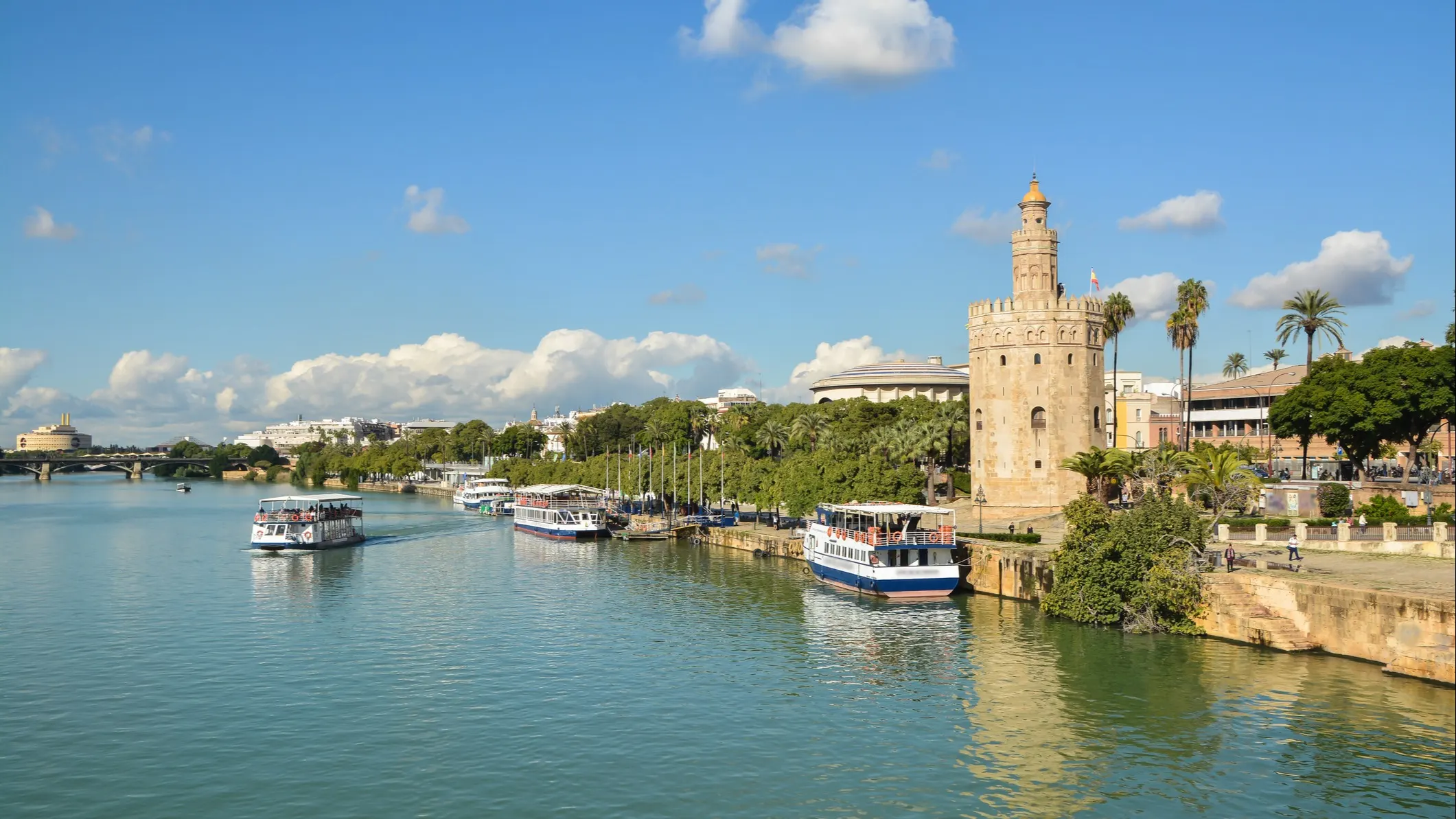
The first time I visited Seville, I was dazzled by the city’s vibrancy. Now, nearly two decades later, it still takes my breath away. This ancient metropolis is a heady mix of gorgeous Moorish architecture, trendy restaurants, and conviviality. Sevillanos take their social lives as seriously as Americans take their careers. Time for family and friends isn’t relegated to life’s margins, it’s a top priority every day with extra helpings on Sunday. Eating great food with people you love isn’t reserved for holidays but part of the fabric of daily life.
“I could get used to this,” I told my husband the first time we visited.
Rich and I were living in Cleveland at the time, and when the next bitterly cold, slushy February rolled around, we unanimously voted to leave the Snow Belt for another visit to Seville. We went back again and again, staying longer each time. Luckily we had a flexible schedule; Rich had taken early retirement, and as a journalist I could work anywhere. Finally, in 2004, we decided we’d move to Seville “for a year.” And we’re still there.
I soon learned moving abroad is the best opportunity to reinvent yourself outside of the witness protection program! A Spanish friend persuaded me to join her art class, and for the first time in decades I began painting again. I started writing for a local expat publication, focusing on travel and culture, and am now the author of the blog Enjoy Living Abroad and five travel books, three of them Amazon bestsellers. I’ve mastered masses of technology, including social media, self-publishing, and video-making. It’s tremendously exhilarating. And I’m convinced it’s doing more to stimulate my brain’s synapses than Sudoku, bridge, or online games ever could.
And then there’s the travel. Rich and I can walk out of our Seville apartment, stroll to the railway station, and step onto a train that will link us to the farthest reaches of Europe. Twice we’ve taken three-month railway adventures, visiting places I’ve dreamed of since childhood.
One reason we can manage all this travel is because we live in an affordable city. I grew up in what’s now Silicon Valley, and one family member who’s still there pays six times our Seville rent for roughly equivalent lodgings. Meals in Silicon Valley easily run $50 per person plus wine at $10 to $15 a glass. In Seville, dinner at a trendy restaurant might cost $25 a person with wine, and in old-school eateries away from the center, lunch or dinner for two is often just $14.
To some, my decision to live in Seville appears inexplicable or eccentric. But the reality is most expats move abroad for much the same reason we went away to college—not because we love our family or country any less, but because they have prepared us to go out and embrace a bigger, brighter future.
Expat life is a splendid adventure. The French writer Émile Zola said, “If you ask me what I came into the world to do, I will tell you: I came to live out loud.” And if you ask me, I will tell you there’s nothing like moving to a city like Seville for pumping up the volume on your life.
Featured Image Copyright: - ©iStock.com/SeanPavone
Get Your Free Spain Report Today!
Get Your Free Spain Report Today!
Learn more about the lower cost of living in Spain and other countries in our free daily postcard e-letter. Simply enter your email address below and we'll also send you a FREE REPORT — Live the Good Life in Sunny, Affordable Spain.

By submitting your email address, you will receive a free subscription to IL Postcards and special offers from International Living and our affiliates. You can unsubscribe at any time, and we encourage you to read more about our Privacy Policy.
